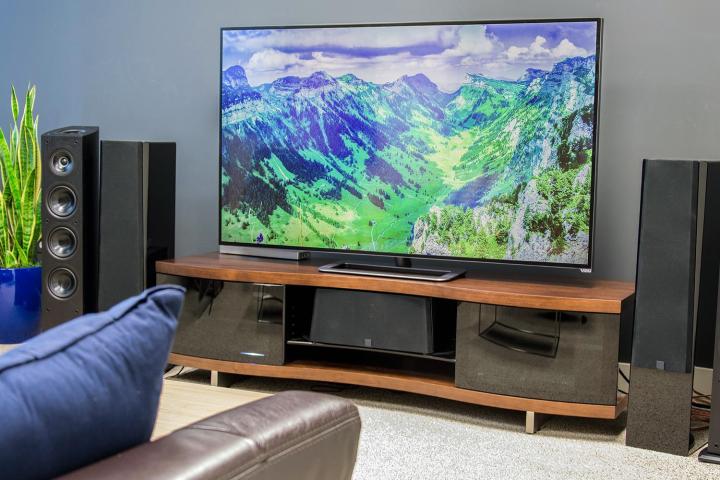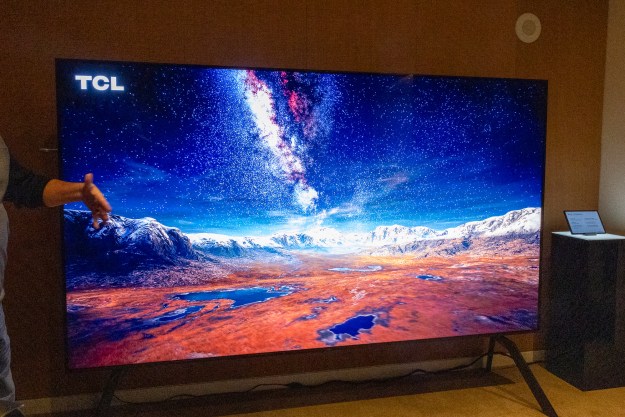
All the excuses are gone, all the exceptions, null, all the arguments, moot. Manufacturers plotted to phase out 1080p TVs years ago, and with recent holiday pricing announced, we’ve now turned that corner. You really should buy a 4K UHD TV.
Still need convincing? Good! You’re doing your research! Here’s what you need to know.
4K UHD TVs are affordable now
Remember the laugh-out-loud moments we had over the inconceivably high price tags the first 4K UHD TVs came out with? Sony with its $25,000 85-incher? Samsung’s $40,000 84-incher? No? Then please enjoy these Amazon reviews to jostle your memory whilst tickling your funny bone (come on, even George Takei had a few chuckles over these).
Indeed, 4K UHD TVs started out (almost) hilariously expensive, but in just a few short years they became downright reasonable. In fact,
But are these chintzy, stripped-down TVs? Au contraire!
All the good TVs are 4K UHD
When a no-name brand comes out of left field with a 55-inch 4K UHD TV priced below $1,000 while its big-name competitors are charging at least seven times that much, you should be suspicious. But that’s not the situation we’re looking at today. Now, all the big-name manufacturers are competing for your
But here’s the clincher: Manufacturers want to phase out 1080p TVs — right or wrong, that’s what they’re doing — and they are choosing to put their best tech into 4K UHD TVs, not into 1080p TVs.

There’s a saying among TV experts that rings mostly true: It’s not the panel, it’s the processing. Meaning: the exact same LCD panel can be used in two televisions, but one will look remarkably better than the other because of superior video processing. That’s still true today, but now manufacturers have more advanced backlighting systems, color enhancement technologies, High Dynamic Range processing, a new HDMI specification, and more — all of which make a tremendous difference in picture quality. But none of the cutting-edge stuff is going into 1080p TVs any more.
Certainly, there are still some solid 1080p TVs out there, and they will look good for years to come. But if you want a great TV capable of taking advantage of all the latest video content — from streaming 4K UHD titles to the coming Ultra HD Blu-ray Disc format– you’re going to need a
TVs are an investment. So invest!
As we mentioned at the beginning of this article, there are places where a 1080p TV still makes sense — you don’t need a 42-inch 4K TV for your bathroom (unless you actually do, in which case: congratulations). But if we’re talking about the centerpiece of your home-entertainment system, you should looking at a TV that is going to serve you well for years to come, not leave you feeling like you’re missing out on something every time you turn it on.
A 4K UHD TV will let you see the best-quality version of House of Cards, Game of Thrones, or whatever TV show or movie you’re into, for years to come. You’ll get more color, better contrast, and higher resolution, and your eyes will thank you for it.
Pshaw! There’s plenty of content
You’ve no doubt run into some articles talking about a paucity of 4K UHD content out there to watch. That’s yesterday’s problem, friends. There’s already a solid amount of
Not into streaming? Ultra HD Blu-ray discs and players will debut in January and February of 2016, and by holiday time next year, you can count on a large selection of titles to choose from that will make your TV look incredible.
Granted, broadcast networks and cable-satellite operators have a little catching up to do, but trust us when we say behind-the-scenes work to bring you your favorite sports and broadcast TV shows in 4K UHD is well underway. When the transition begins, it’s going to move quickly. It’s only a matter of time, and you’ll want to be ready to take advantage when it goes down.
Choose wisely
We hope you’re now feeling comfortable pulling the trigger on a new 4K Ultra HD TV purchase. It really is the smartest decision, and in a year or two, 1080p TVs won’t even be an option. But if you’re not sure which 4K UHD TV might be best for you, we’ve got some more helpful advice for you right here in our detailed 4K Ultra HD TV buying guide.
Happy shopping!
Editors' Recommendations
- What we want to see from the next Apple TV 4K
- Samsung’s new 98-inch DU9000 4K TV is just $4,000. Can it beat TCL and Hisense?
- Vizio’s first 86-inch 4K TV is coming soon, for $999
- Belkin drops a $50 mount for iPhone video calls on Apple TV 4K
- If you don’t see CBS in 4K on YouTube TV, try this




